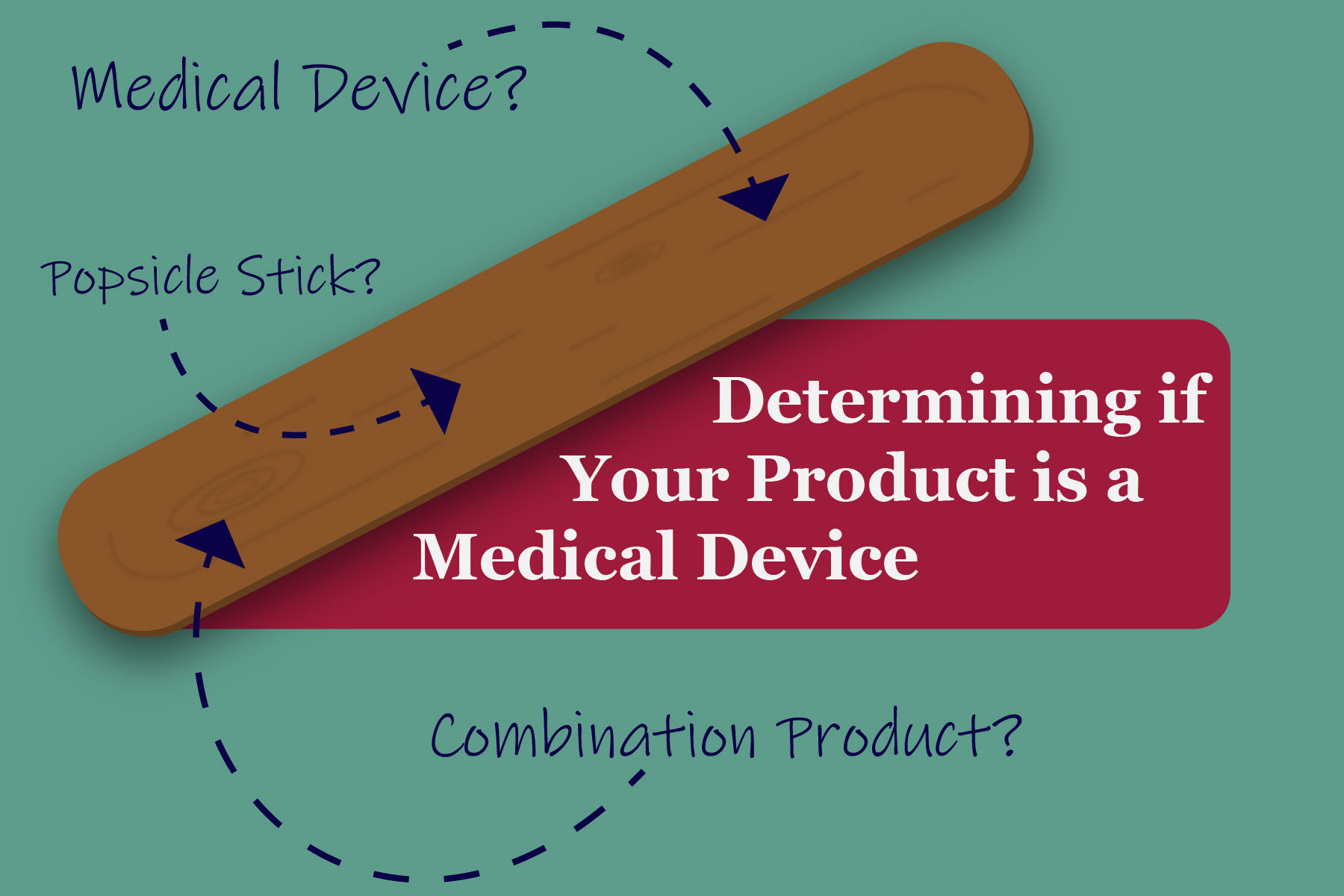It may seem straightforward to determine if a product is a medical device or not but there is a surprising amount of gray-area in the field. The term “medical device” covers a simple tongue depressor to an implanted pacemaker and everything in between. A simple wooden stick is one product-development decision away from either being a popsicle stick, or a tongue depressor that crosses into a strict world of regulatory requirements.
The first step in determining if your product is a medical device is looking at how the law defines “medical device”. Section 201(h) of the Food, Drug, and Cosmetic act lays out explicitly what is legally considered a device; put simply, a medical device is any product that diagnoses, treats, or prevents a disease/condition by affecting any structure or function of the body without chemical action (meaning it is not a pharmaceutical drug).1 The first thing any product development team should do is define the intended use and indications for use of your product, and then compare it against Section 201(h) of the FD&C Act to determine if it’s a medical device.
After you have defined the intended use of your product and compared it against the law, the next step should be determining if there is an existing FDA product classification that your product could fit into. If your product can fit into an already existing classification, it is a good indicator that it is a device. The FDA has several public and searchable databases that can aid in this endeavor, such as the product classification database, the Establishment Registration and Device Listing database, and any of its marketing authorization databases (such as PMA or De Novo).2 It’s important to remember that even if you can’t find a similar classification or device in these databases, it doesn’t necessarily mean your product isn’t a medical device – it might just be the first of its kind!
As technology advances, the boundaries of classical medical devices are stretched further and further. Mobile medical applications or software as a medical device (SaMD) are emerging trends that are new to the field and therefore may not be completely obvious that they fall into the regulatory landscape. Additionally, combination products are products that combine a device and a drug or biologic and can fall under the device requirements depending on the defined intended use. Even if your product is not a device, it may be regulated by another center within the FDA such as the Center for Biologics Evaluation and Research (CBER).
A seemingly straightforward question like “Is my product a medical device?” can lead many firms down a confusing path. EMMA International has a team of regulatory experts that can not only help you determine if your product is a medical device but also guide you on how to get your product on the market and ensure its compliance. Give us a call at 248-987-4497 or email info@emmainternational.com to see how we can help!
1FDA (September 2017) Classification of Products as Drugs and Devices and Additional Product Classification Issue retrieved on 08/30/2020 from: https://www.fda.gov/regulatory-information/search-fda-guidance-documents/classification-products-drugs-and-devices-and-additional-product-classification-issues#:~:text=For%20a%20medical%20product%20also,primary%20intended%20purposes%20through%20chemical
2FDA (December 2019) How to Determine if Your Product is a Medical Device retrieved on 08/30/2020 from: https://www.fda.gov/medical-devices/classify-your-medical-device/how-determine-if-your-product-medical-device#:~:text=If%20you%20identify%20a%20similar,the%20classification%20of%20your%20device.






